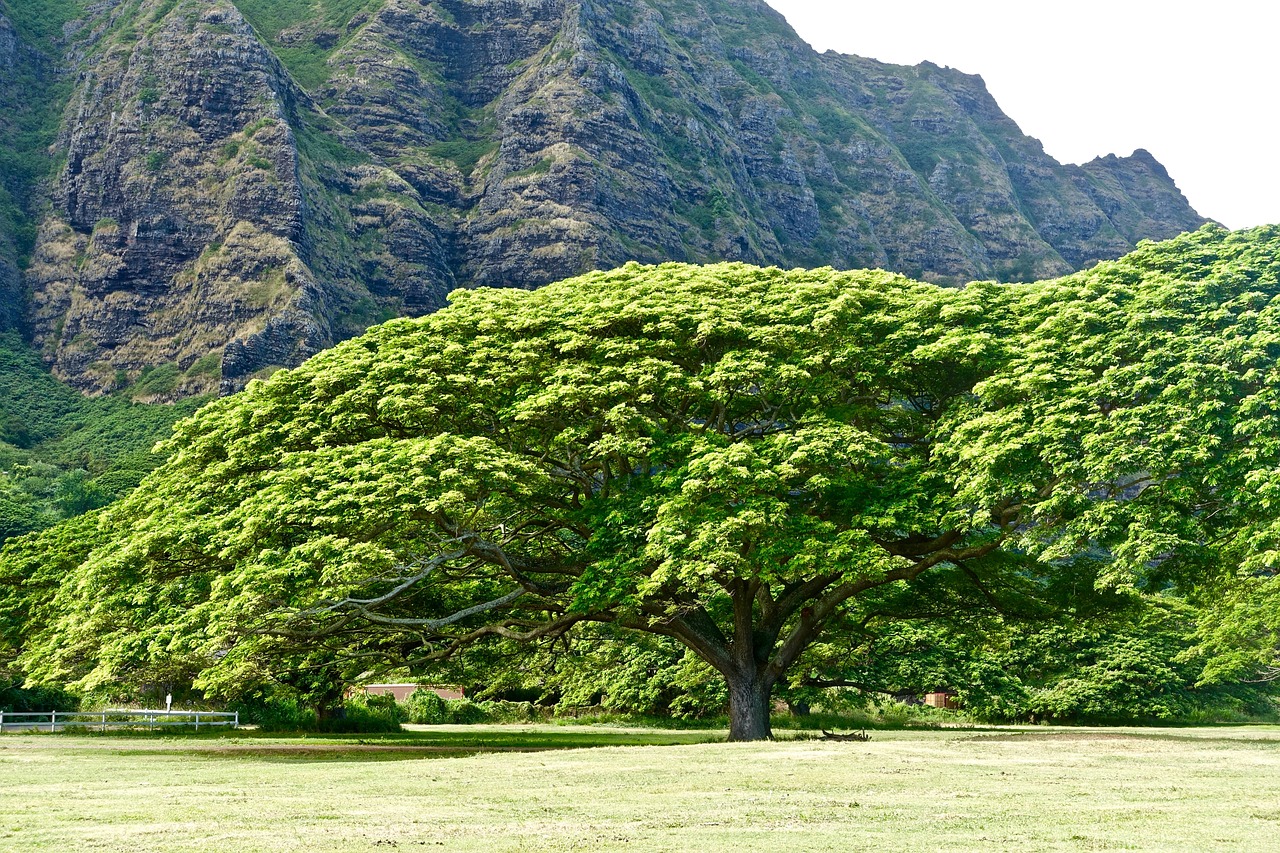Sustainable Practices for Visiting the Hawaiian Islands
When it comes to visiting the Hawaiian Islands, it's essential to embrace sustainable practices that not only allow you to experience the beauty of this paradise but also contribute to preserving its natural resources and cultural heritage. By being mindful of your impact on the environment and local communities, you can make a positive difference while enjoying all that Hawaii has to offer.

Responsible Tourism
Exploring eco-friendly ways to enjoy the beauty of the Hawaiian Islands while preserving their natural resources and cultural heritage.
Responsible tourism is all about understanding the impact of your visit on the environment and local communities in Hawaii. By being mindful of your actions and choices, you can contribute to the preservation of this stunning destination. When you travel responsibly, you become a part of the solution rather than adding to the problem. It's about leaving a positive footprint behind, one that respects and protects the delicate balance of nature and culture in Hawaii.
Exploring sustainable transportation options for getting around the islands is crucial in minimizing your carbon footprint. By opting for public transit, carpooling, biking, or walking tours, you can significantly reduce the environmental impact of your travels. Embracing these eco-friendly transportation methods not only benefits the environment but also allows you to immerse yourself more deeply in the beauty of the Hawaiian Islands.
Utilizing buses, shuttles, and ridesharing services is not only convenient but also helps in reducing carbon emissions. By sharing rides with fellow travelers or using public transportation, you can lower your individual impact on the environment while exploring the islands.
Embarking on biking and walking tours is a fantastic way to experience the natural wonders of Hawaii while treading lightly on the environment. By choosing these sustainable modes of transportation, you can enjoy the sights, sounds, and scents of the islands up close, all while minimizing your carbon footprint.
Choosing eco-friendly accommodations such as green hotels, lodges, or vacation rentals is another essential aspect of sustainable travel. These establishments prioritize sustainability by implementing energy-saving practices, reducing waste, and supporting local communities. By staying at such places, you can rest assured that your accommodation aligns with your commitment to responsible tourism.
Engaging with local shops, restaurants, and tour operators is key to supporting the economy of the Hawaiian Islands. By purchasing goods and services from local businesses, you contribute directly to the livelihoods of residents and help preserve the unique culture and heritage of Hawaii.
Sourcing food from farmers markets and opting for local produce not only reduces your carbon footprint by cutting down on food miles but also supports local farmers and promotes sustainable agriculture. Enjoying fresh, locally grown food is a delicious way to connect with the land and support the community.
Respecting Hawaiian culture, traditions, and sacred sites is fundamental to responsible tourism. By learning about and honoring the customs and beliefs of the local people, you show reverence for the rich heritage of Hawaii. Remember, every action you take during your visit has the power to either uplift or diminish the cultural fabric of the islands.

Transportation Choices
Exploring eco-friendly ways to enjoy the beauty of the Hawaiian Islands while preserving their natural resources and cultural heritage.
When it comes to exploring the stunning Hawaiian Islands, making sustainable transportation choices is key to reducing your carbon footprint and preserving the natural beauty of the islands. Let's delve into some eco-friendly ways to get around during your visit.
One of the most environmentally friendly transportation options in Hawaii is utilizing public transit and carpooling services. By hopping on buses, shuttles, or participating in ridesharing programs, you can significantly reduce the emissions produced during your travels. Not only does this help protect the island's delicate ecosystem, but it also allows you to interact with locals and immerse yourself in the community.
For a more active and nature-friendly experience, consider exploring the islands on foot or by bike. Biking and walking tours not only minimize your environmental impact but also offer a unique perspective of the breathtaking landscapes and hidden gems of Hawaii. Imagine feeling the warm breeze on your face as you pedal through lush forests or stroll along pristine beaches - a truly immersive way to connect with nature.
Choosing green hotels, lodges, or vacation rentals that prioritize sustainability is another crucial aspect of responsible tourism. Opting for accommodations that implement eco-friendly practices, such as energy and water conservation, waste reduction, and support for local communities, allows you to enjoy a comfortable stay while minimizing your environmental footprint.
Engaging with local shops, restaurants, and tour operators not only enhances your travel experience but also plays a vital role in supporting the island's economy and preserving its cultural heritage. By purchasing souvenirs from local artisans, dining at family-owned eateries, and booking tours with indigenous guides, you contribute to the sustainability of Hawaii's communities and traditions.
Sourcing food from farmers markets and opting for local produce is not only a delicious culinary experience but also a sustainable choice that reduces your carbon footprint. By supporting local farmers and businesses, you promote food security, preserve agricultural traditions, and enjoy fresh, organic ingredients that reflect the authentic flavors of Hawaii.
Respecting Hawaiian culture, traditions, and sacred sites is essential during your visit to the islands. By learning about the history and customs of the local communities, honoring sacred places with reverence, and participating in cultural activities with respect, you contribute to the preservation of Hawaii's rich heritage and promote cross-cultural understanding.

Public Transit and Carpooling
When it comes to exploring the Hawaiian Islands sustainably, utilizing public transit and carpooling are excellent options to reduce your carbon footprint and minimize the environmental impact of your travels. Public transit systems, such as buses and shuttles, are not only convenient but also help in decreasing the number of individual vehicles on the road, thus lowering emissions. By opting for these shared transportation modes, visitors can contribute to the preservation of Hawaii's natural beauty and resources.
In addition to public transit, carpooling is another eco-friendly way to get around the islands. By sharing rides with fellow travelers or locals, you can significantly reduce the number of vehicles on the road, leading to less traffic congestion and lower greenhouse gas emissions. Carpooling not only benefits the environment but also allows you to connect with others and share experiences during your journey.
Moreover, ridesharing services like Uber and Lyft offer convenient and sustainable transportation options for visitors to explore the Hawaiian Islands. By carpooling with others heading in the same direction, you can split the cost of the ride while reducing the overall carbon footprint of your travel. Embracing these shared mobility solutions can make a positive difference in preserving the natural wonders of Hawaii for future generations.

Biking and Walking Tours
Exploring the Hawaiian Islands on biking and walking tours is not only a great way to stay active but also a sustainable way to minimize your environmental impact. Picture yourself pedaling along the scenic coastal roads, feeling the warm breeze on your face, and taking in the breathtaking views of the turquoise waters and lush landscapes. The slow pace of biking or walking allows you to truly immerse yourself in the natural beauty of the islands, giving you a deeper connection to the environment around you.
When opting for biking and walking tours, you are not only reducing your carbon footprint but also supporting local businesses that offer these eco-friendly excursions. These tours often take you off the beaten path, allowing you to discover hidden gems and experience the authentic charm of the Hawaiian Islands. Imagine wandering through quaint villages, stopping to chat with locals, and learning about the rich history and culture of the islands firsthand.
Additionally, biking and walking tours give you the flexibility to explore at your own pace, stopping whenever something catches your eye or piques your interest. Whether you choose to meander through vibrant botanical gardens, hike to cascading waterfalls, or simply relax on a secluded beach, these tours offer a more intimate and immersive way to experience the beauty of Hawaii.

Eco-Friendly Accommodations
Exploring eco-friendly ways to enjoy the beauty of the Hawaiian Islands while preserving their natural resources and cultural heritage.
Understanding the impact of tourism on the environment and local communities in Hawaii.
Exploring sustainable transportation options for getting around the islands.
Utilizing buses, shuttles, and ridesharing services to reduce carbon emissions.
Exploring the islands on foot or by bike to minimize environmental impact.
When it comes to choosing accommodations in Hawaii, opting for eco-friendly options can significantly contribute to sustainable tourism. Eco-friendly accommodations such as green hotels, lodges, or vacation rentals prioritize sustainability by implementing practices that reduce their environmental impact. These establishments often utilize renewable energy sources, practice water conservation, and promote recycling and waste reduction.
Engaging with local shops, restaurants, and tour operators not only enhances the authenticity of your Hawaiian experience but also plays a vital role in supporting the local economy. By choosing to spend your money at local businesses, you directly contribute to the livelihoods of residents and help preserve the unique cultural identity of the islands.
One of the best ways to support local farmers and reduce your carbon footprint is by sourcing food from farmers markets and opting for locally grown produce. Not only does this support the local economy, but it also allows you to savor fresh, seasonal ingredients that reflect the unique flavors of Hawaii.
Respecting Hawaiian culture, traditions, and sacred sites is essential during your visit to the islands. By learning about and honoring the cultural practices of the indigenous people, you show reverence for the rich heritage of Hawaii and contribute to the preservation of its cultural legacy.

Supporting Local Businesses
When visiting the Hawaiian Islands, one of the most impactful ways to contribute positively to the local community and economy is by . By engaging with local shops, restaurants, and tour operators, visitors can directly support the island's economy and help sustain the unique culture of Hawaii.
Local businesses in Hawaii offer a diverse range of products and services that showcase the rich heritage and traditions of the islands. From handmade crafts to authentic Hawaiian cuisine, these businesses play a vital role in preserving the cultural identity of the region.
One way to support local businesses is by shopping at farmers markets and sourcing produce from local vendors. Not only does this help reduce the carbon footprint associated with importing food, but it also ensures that visitors are experiencing the freshest and most authentic flavors of Hawaii.
Additionally, by choosing to dine at local restaurants, visitors can savor traditional Hawaiian dishes made with locally sourced ingredients. This not only supports small businesses but also allows visitors to immerse themselves in the unique culinary heritage of the islands.
When booking tours or activities, opt for local tour operators who have a deep understanding of the region and its cultural significance. These operators often provide authentic experiences that are both educational and respectful of the environment and local communities.
It's essential to be mindful of the impact of tourism on local businesses and strive to make choices that contribute positively to the sustainability of Hawaii's economy. By supporting local businesses, visitors can play a significant role in preserving the charm and authenticity of the Hawaiian Islands for future generations to enjoy.

Farmers Markets and Local Produce
When visiting the Hawaiian Islands, one of the best ways to support sustainability is by exploring the vibrant farmers markets and opting for local produce. These markets not only offer a wide variety of fresh fruits, vegetables, and other goods but also provide a direct connection to the local community and culture. By purchasing from these markets, you are reducing your carbon footprint by supporting local farmers and businesses while enjoying the freshest ingredients that Hawaii has to offer.

Cultural Sensitivity
When visiting the Hawaiian Islands, it is essential to approach the local culture with and respect. Hawaii has a rich heritage and deep-rooted traditions that should be honored by all visitors. One way to show respect is by learning about the history and customs of the islands before your trip. Understanding the significance of certain practices and sites can help you navigate the local culture with grace and appreciation.
Engaging in cultural activities and experiences can also deepen your understanding and connection to the Hawaiian way of life. Participating in traditional ceremonies, hula performances, or lei-making workshops can provide insight into the values and beliefs of the local community. By immersing yourself in these experiences, you not only show respect but also contribute to the preservation of Hawaiian culture.
Another important aspect of cultural sensitivity is respecting sacred sites and landmarks. Many places in Hawaii hold spiritual significance to the native people, and it is crucial to treat these locations with reverence. Avoid touching or disturbing sacred objects, and always follow any posted guidelines or restrictions. By showing respect for these sites, you demonstrate your appreciation for the cultural heritage of the islands.
Furthermore, interacting with locals in a respectful and courteous manner is key to fostering positive relationships and promoting cultural exchange. Take the time to listen to the stories and perspectives of the Hawaiian people, and approach conversations with an open mind and heart. By showing genuine interest and respect for the local community, you can create meaningful connections and leave a positive impact during your visit.
Frequently Asked Questions
- What are some eco-friendly transportation options in Hawaii?
There are several sustainable transportation choices in Hawaii, including public transit, carpooling, biking, and walking tours. These options help reduce carbon emissions and minimize environmental impact.
- How can I support local businesses during my visit to the Hawaiian Islands?
You can support local businesses by engaging with shops, restaurants, and tour operators that are based in Hawaii. Additionally, sourcing food from farmers markets helps reduce carbon footprint and supports local farmers.
- Why is it important to respect Hawaiian culture and traditions?
Respecting Hawaiian culture, traditions, and sacred sites is crucial to preserving the cultural heritage of the islands. By showing cultural sensitivity, visitors contribute to the preservation of Hawaii's unique identity.


















